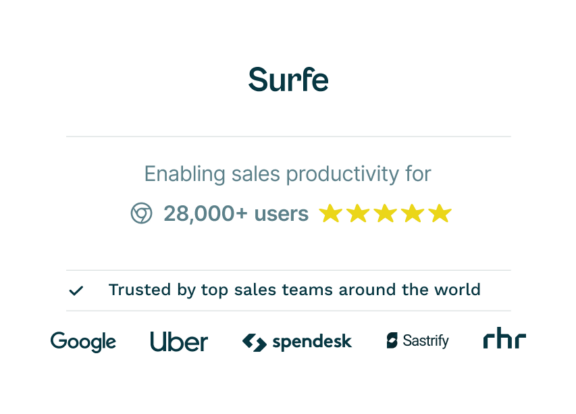Scared of Cold Calling? You Need a Solid Script

We may not be celebrities, but we’re pretty sure we have a good idea of what live television feels like.
Not knowing what’s going to come out of the other person’s mouth, thinking on your feet for a response, the risk of (figuratively) falling flat on your face…yep, sounds like a cold call to us.
Cold calling can feel unpredictable and challenging. On one end of the spectrum, you could speak to someone who’s genuinely interested in what you have to say. On the other – well, we’ve all been hung up on at some point in our careers.
It’s no wonder that 63% of sales reps consider cold calling the least favorable aspect of their job. But, unfortunately for them, it is also essential.
Here’s the thing. There’s a lot – and we mean a lot – of chatter every day about new forms of outreach, new tactics with a 100% success rate, tools and strategies that are going to have leads falling over themselves to talk to you…but the fact is, picking up the phone has been around for a long time for a reason. It works.
A lot of people will hang up, and you will get a lot of rejections, but ultimately, it’s a game of numbers and consistency. Call enough people and someone will say yes – after all, it’s a lot harder to ignore a phone conversation than an email.
That said, you don’t have to go into cold calling completely, well, cold. A well-structured script can reduce anxiety, boost confidence, and keep your entire sales team consistent.
There’s an art to a good cold-calling script – and that’s exactly what this article is going to cover:
- The Importance of a Cold-Calling Script
- Tips for Building an Effective Cold-Calling Script
- Perfecting the Script Over Time Based on Results
- Why an Objections Sheet is Critical to Success
After reading, you’ll be ready to hit the phones with confidence. Yes please.
Let’s go👇
The Importance of a Cold-Calling Script
Let’s cut to the chase: a cold calling script is really important. Use one, and your customers will have a consistent, smooth experience – which doesn’t take over their entire afternoon. Benefits of a cold-calling script include:
Consistency across the team: a script keeps every salesperson delivering the same message – regardless of experience level. Every lead will receive the same high-quality pitch and a consistent experience.
Boosts confidence and reduces nerves: when sales reps know what to say and how to say it, they can focus on connecting with the prospect. Confidence – and a reduced change of forgetting important details – leads to more engaging conversations and ultimately higher success rates.
Keeps conversations focused and goal-oriented: without a script, conversations can (in theory) go anywhere. Keeping the call from veering off-topic saves time for sales reps, and makes sure the recipient has a good experience too. It also makes sure each call has an objective: to book a meeting or qualify the lead.
Tips for Building an Effective Cold-Calling Script
A good cold-calling script can be gold dust – but what separates the good from the great? Let’s find out:
Start with a Strong Opening
First impressions matter. A wishy-washy opening isn’t going to get you anywhere; instead, use a concise, engaging opener that introduces who you are and why you’re calling in just a few seconds.
Where possible, use specific information about the prospect to show you’ve done your research. You basically want to avoid sounding like everyone gets the same old script (even if that is, technically, what’s happening 😉) – a bit of personalization goes a long way.
For example, a good cold call opener could be something like:
“Hi [Name], I’m [Your Name] from [Company]. I noticed your team has been growing quickly, and I wanted to share some ideas about how we’ve helped companies like yours manage that growth effectively.”
Ask Engaging Questions
Questions matter: without them, you’re basically monologuing (and remember, you’re not a famous actor…yet).
Asking open-ended questions – that is, questions that require more than a yes/no answer – invites the prospect to engage in the conversation and express their needs.
Questions like “What are your biggest challenges with [specific area] right now?” or “How are you currently handling [problem your solution addresses]?” do the trick here.
Highlight the Value Proposition
Your script should communicate the unique value of your product or service in a way that’s tailored to the prospect’s pain points. Do a bit of research first to see if you can figure out what they might be struggling with – or use a common industry pain point if nothing comes up in your investigation.
Keep it simple with something like “We help companies like yours reduce [specific challenge] by [solution]. This has saved our clients up to [specific result] in [timeframe].”
End with a Strong Call to Action
Finish the call by guiding the prospect toward the next step – that might be scheduling a demo, setting up a follow-up call with another stakeholder, or sending more information over by email.
This should feel easy and natural: “Would you be open to a 15-minute call next week to explore how we can help with [specific need]?” or something similar.
Perfecting the Script Over Time Based on Results
It’s likely that your script will need a bit of polishing before it becomes fail-safe. Here’s how to do it:
Track and Measure Performance
Keep track of metrics such as:
- Call-to-appointment conversion rates: in other words, how many meetings do you get out of every 100 calls?
- Length of calls: like Goldilocks, you want a call length that’s not too short, but not too long. It’ll probably take a few goes to establish what length is just right.
- Number of calls needed to close deals: it can take a minimum of six calls to make contact with a lead. Make sure you’re following up enough.
CRMs can help you track how well scripts perform, showing patterns in responses and helping refine approaches.
Gather Feedback from Your Team
You want to balance the quantitative feedback of above with qualitative feedback, too. The reps using the script daily will have valuable insights into what works and what doesn’t.
Collecting feedback from the team allows you to make small adjustments that can improve the script’s effectiveness over time.
Experiment with Adjustments
Two adjustments to play around with here:
- A/B Testing Variations: try different versions of your opening lines, questions, or value propositions to see what resonates best with prospects.
- Keep Adapting: cold-calling is dynamic, and scripts should evolve as market conditions and buyer preferences change. Make it a practice to review and tweak scripts regularly.
Why an Objections Sheet is Critical to Success
All of us are going to face an objection at some point – whether it’s about pricing, timing, or product relevance.
Having a prepared objections sheet allows reps to respond confidently and keep the conversation moving forward.
These are pretty easy to build. First, identify the top 5-10 objections your sales team typically hears (say, “We don’t have the budget” or “We’re happy with our current provider”).
Develop clear, respectful responses to each objection. Let’s take a look at one example:
Objection: “We don’t have the budget right now”.
Response: “I completely understand. Many of our clients initially felt the same way, but they found that our solution helped them save [specific amount] over [time period].”
Simple, right?
You can also practice overcoming objections using role-playing sessions. Encourage your team to practice handling them through role-playing exercises, making them more comfortable and effective during real calls.
Reps who are prepared for objections can pivot smoothly and stay in control of the conversation – instead of panicking or giving an unconvincing answer.
Whatever you do, make sure you’re updating the objections sheet regularly. New objections will come up and the market will change – the last thing you want is to have a script from 2020 that sounds, err, like it’s from 2020.
Keep an eye on ongoing feedback from the team and adjust responses as needed – Bob’s your uncle.
Let’s Wrap It Up!
Approach every cold call armed with a decent script, and you’ll feel calmer, more confident, and in control. Sure, you might still experience a knockback every now and then – but on the whole, you’ll be able to give your leads a great experience and increase the number of people you move to the next stage.
Looks like you might become a (sales) celebrity after all. Just don’t forget about us when you’re up in the Hollywood Hills, ok?

Hey you – big shot!
Need some people to cold call? Better find their phone numbers through Surfe. Tell all your friends, yeah?
FAQs about Cold Calling Scripts
What Is Cold Calling And Why Does It Work So Well?
Cold calling is when you call someone without any prior contact to introduce your product or service. It works because it creates a real, direct connection with potential customers. Unlike an email, a phone call is harder to ignore, which increases your chances of starting a meaningful conversation. Make enough calls – and someone will say yes.
How Do I Write An Effective Cold Calling Script?
To write an effective cold calling script, start with a strong opening that introduces who you are and why you’re calling. Personalize your message based on research about the prospect. Ask engaging questions to keep the conversation flowing and show interest in their pain points. Highlight how your product can solve their problems, then finish with a clear call to action. Track your results and tweak your script over time to keep improving – practice makes perfect.
Why Do Sales Reps Fear Cold Calling?
Cold calling can feel stressful because you never know what to expect on the other end of the line. Rejection is common, and sales reps worry about getting hung up on or not knowing how to respond to tough questions. But fear often comes from a lack of preparation. A well-structured script can boost confidence, keeping reps focused and on-message. The more prepared you are, the easier it becomes to navigate conversations and overcome objections smoothly.
How Can I Stay Confident While Cold Calling?
Confidence in cold calling comes from preparation and practice. Use a well-constructed script to ensure you know what to say and how to handle common objections. Role-play practice with your team will also help build confidence. And remember, it’s a numbers game – rejection is just part of the process!
How Do I Handle Objections During Cold Calls?
Handling objections starts with preparation. Create an objections sheet with the top 5-10 objections your team usually hears, and decent responses. You can also practice responding to them before the phone call itself. When an objection comes up, stay calm and offer a clear, respectful response. For example, if someone says, “We don’t have the budget,” you could reply, “I understand. Many of our clients felt the same way initially, but they found our solution saved them [specific amount] in the long run.” Stay flexible and keep the conversation moving forward.


